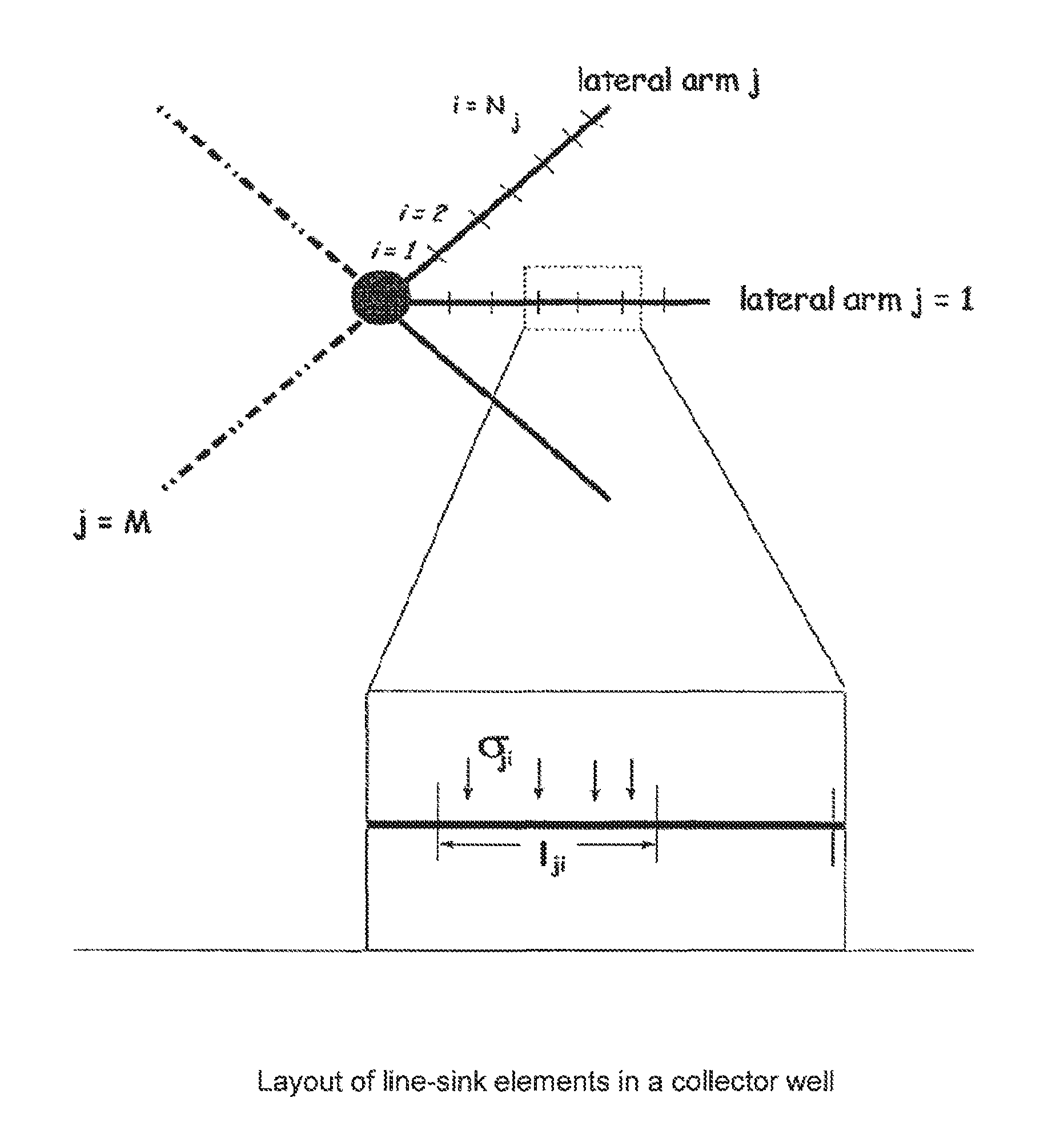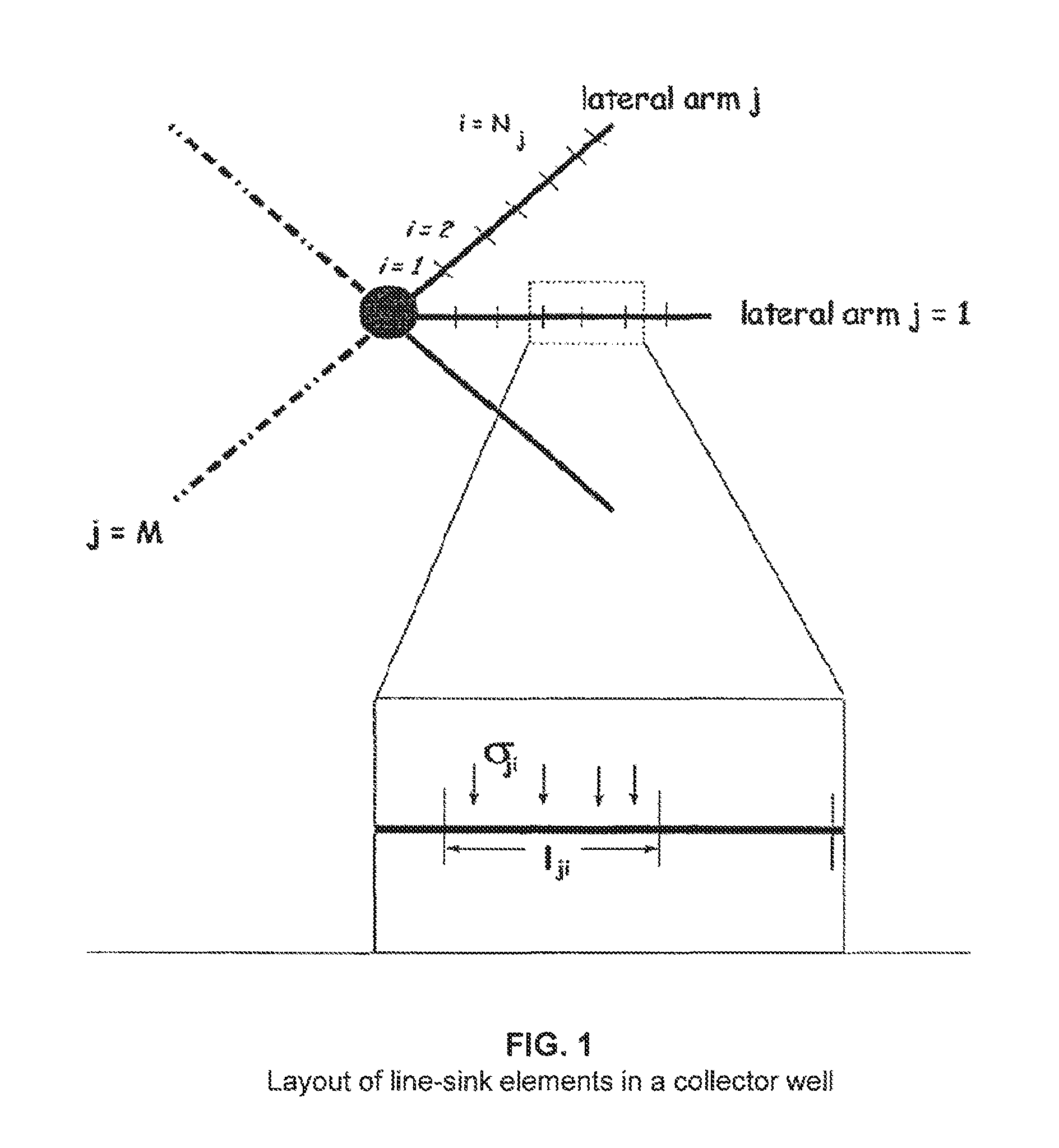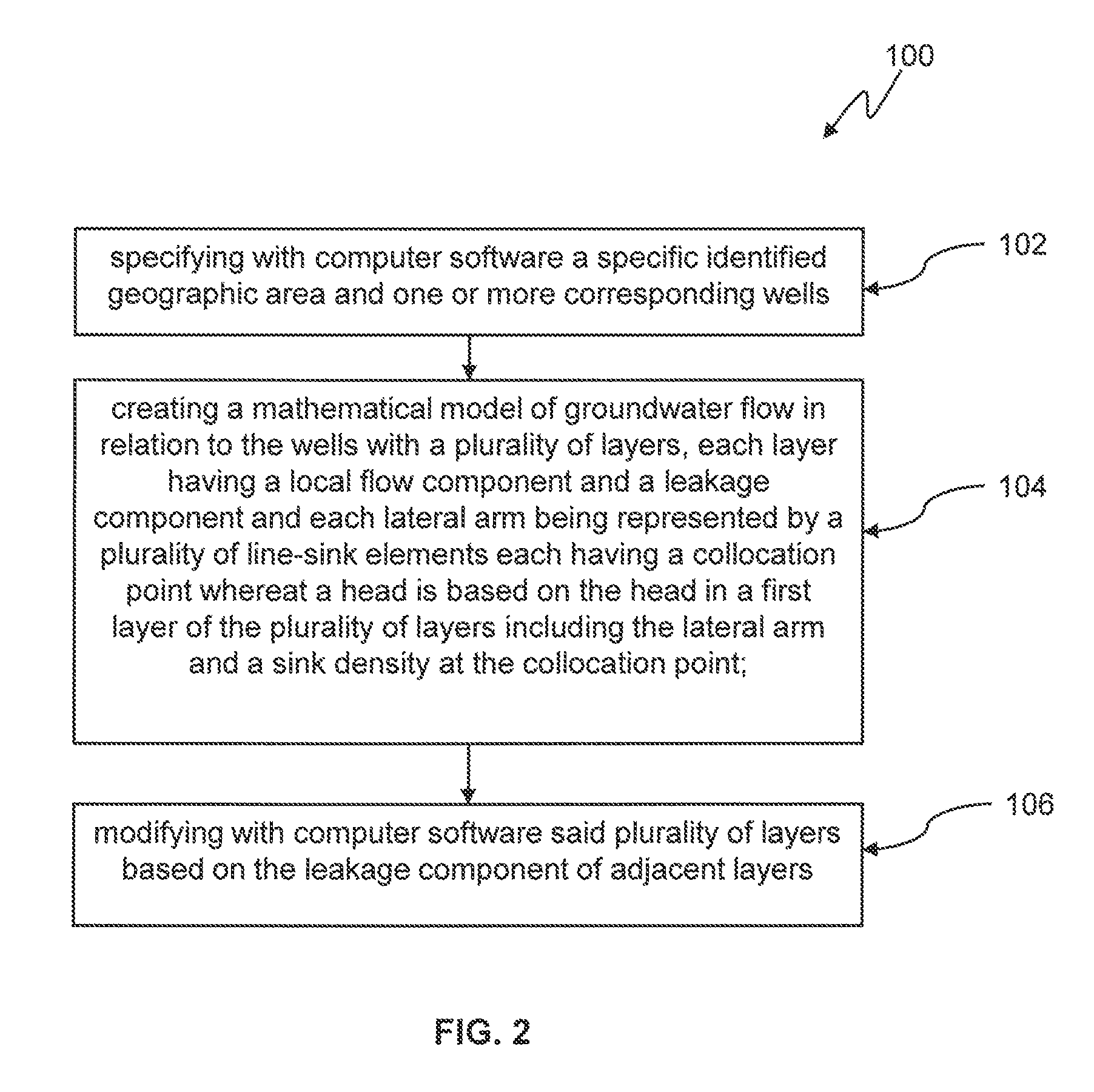Bessel analytic element system and method for collector well placement
an analytic element and collector well technology, applied in the field of analytic element system and method for collector well placement, can solve the problems of limited models and particularly difficult problems of collector wells, and achieve the effect of effective leakage calculation and easy calculation
- Summary
- Abstract
- Description
- Claims
- Application Information
AI Technical Summary
Benefits of technology
Problems solved by technology
Method used
Image
Examples
Embodiment Construction
[0075]The collector well is modelled as a collection of line-sink elements as follows. Consider the collector well in FIG. 1 The collector well is composed of M lateral arms. For lateral arm j; j=1 . . . M, the arm length is Lj the radius of the arm is rj, and the lateral arm is located in model layer kj. We divide each lateral arm j into Njsegments. For segment i of lateral arm j (where i=1 at the caisson), the segment length lji is computed as
[0076]lji=Lj×Nj-i+1Sjwhere(1)Sj=∑ii=1Nj(2)
[0077]This arrangement results in shorter line-sinks at the tips of the lateral arms, and improves the accuracy of the solution. Each line-sink element has a sink density (in volume of water per day per unit length) of σji, and the head in the aquifer at all points near the collector well is a priori unknown. The modeller provides an entry resistance cji at each line-sink, which accounts for the head loss that may occur as water moves from the aquifer into the lateral arm through the well screen or ...
PUM
 Login to View More
Login to View More Abstract
Description
Claims
Application Information
 Login to View More
Login to View More - R&D
- Intellectual Property
- Life Sciences
- Materials
- Tech Scout
- Unparalleled Data Quality
- Higher Quality Content
- 60% Fewer Hallucinations
Browse by: Latest US Patents, China's latest patents, Technical Efficacy Thesaurus, Application Domain, Technology Topic, Popular Technical Reports.
© 2025 PatSnap. All rights reserved.Legal|Privacy policy|Modern Slavery Act Transparency Statement|Sitemap|About US| Contact US: help@patsnap.com



